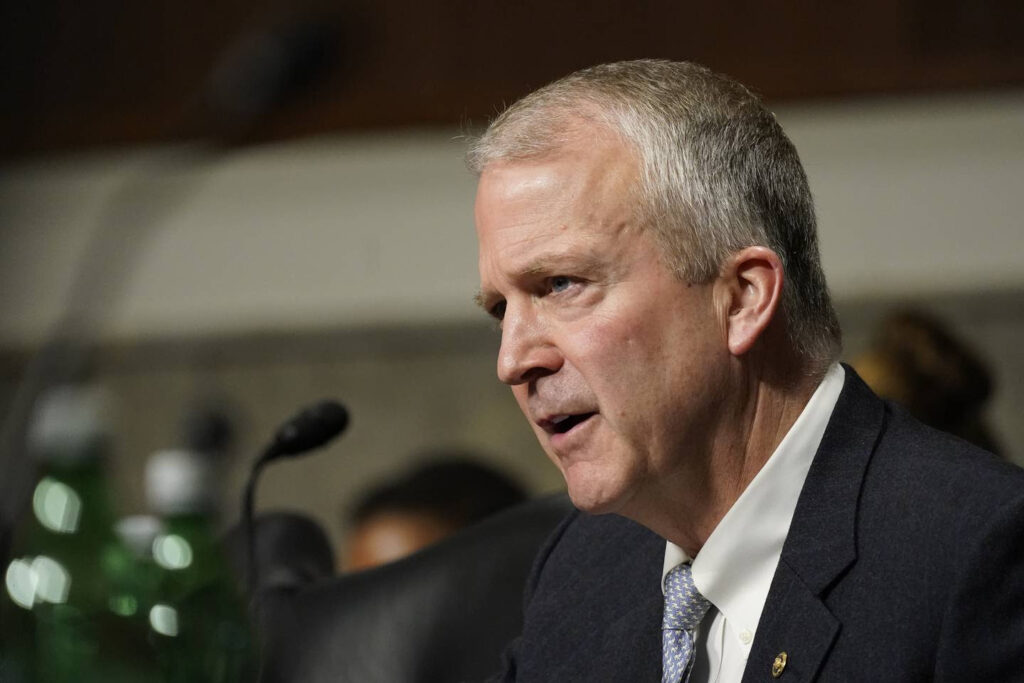US Senator Dan Sullivan released an opinions piece on some of the challenges the state of Alaska is facing, and some proposed changes for the future.
Some of the concerns include how inflation is severely eating into paychecks, and the cost energy is continuously rising.
Another challenge is the utilities cost. If no significant changes are made in the Cook Inlet within the next five years, the state will be forced to resort to import natural gas from Canada or Mexico, to power the Southcentral and Interior Alaska, which will likely double the price of gas. This would severely negatively impact families, homes, small businesses, schools, and hospitals, just to name a few.
But Alaskans were here before, back in 2011, when there was a natural gas shortage. And while Alaskans were told that importing gas from Canada was the only option, “we didn’t allow that to happen.”
Sullivan spoke of acts such as the The Alaska Native Claims Settlement Act, The Magnuson-Stevens Act, and how they transformed fisheries along the nation. He also mentioned how building the Trans-Alaska Pipeline System (TAPS), although it faced much opposition, passed in 1974, and it transformed the state.
The newest project, Alaska LNG, is on the horizon.
Thanks to increased U.S. LNG exports, Europe has significantly decreased its reliance on Russian natural gas. However, because of limited supply, many of our allies in Asia — like Japan, South Korea, and Taiwan — are still heavily dependent on Russian energy. This needs to change. Alaska — with our huge reserves of natural gas and proximity to Asia — is poised to meet the demand while being able to supply our own citizens with low-cost, clean-burning energy.
To see progress on the Alaska LNG project, Sullivan has traveled to Japan and Korea three times in the past 18 months. Last October, U.S. Ambassador to Japan Rahm Emanuel, along with key stakeholders, investors, producers, engineering firms, the Biden administration at senior levels, Gov. Mike Dunleavy and members of his administration, the Alaska Gasline Development Corp. (AGDC), and Japanese government officials drove the induce even further. Sullivan also traveled to South Korea where he held a similar summit and met with President Yoon Suk Yeol, investors and producers, all of whom are likewise interested in the project.
Due to the $30 billion in loan guarantees that the Alaska congressional delegation was able to secure in the infrastructure bill, we can tout the Alaska LNG project as the only LNG project backed by the full faith and credit of the United States. Finally, the expanded 45Q tax credits for carbon capture and sequestration will add nearly $600 million in annual revenue during the first five years of the project, with an additional seven years of equivalent tax credits. We are now also able to tout the Alaska LNG project as the only U.S. West Coast LNG project that has all of the necessary federal permits and approvals, including the FERC export license.
This year, investors and buyers have been coming to our state in droves to look at the Alaska LNG project.
Many Alaskans, including myself, have worked on getting North Slope natural gas to Alaskans first, then to global market for years — decades, even. And I understand the skepticism that many in Alaska bring to this complex project. But after working on this big dream for Alaska for many years, we are seeing key stakeholder alignment in ways that have never happened before.
Not only would this project provide low-cost energy to Alaskans across our state, but it will also provide a steady source of income to the state for many years to come and create 10,000 construction jobs and 1,000 operations jobs.
“Like we have in the past, Alaska’s elected officials need to work together to focus on the immediate challenge and the opportunities that this project presents. AGDC is working to secure $150 million for the next step in this project to finish the front-end engineering and design. Having the state as a co-investor, alongside the private sector, in this phase would send a strong signal to investors and help Alaska LNG’s chances of getting over the finish line.”
Sullivan plans to provide detailed briefing to elected officials in the state Legislature to help solve two main problems, importing gas from Mexico or Canada, and to secure a low-cost energy for the future of Alaska.
“This is a big, complicated project, no doubt. And as some of you might have read in these pages, there are skeptics who have made careers out of being naysayers, with no bold vision for Alaska. But we a have strong and proud history of proving skeptics wrong and getting big things done for our state when we unite. I, for one, am all in. I hope others will join me.”
Photo credits to AP Photo/Carolyn Kaster

